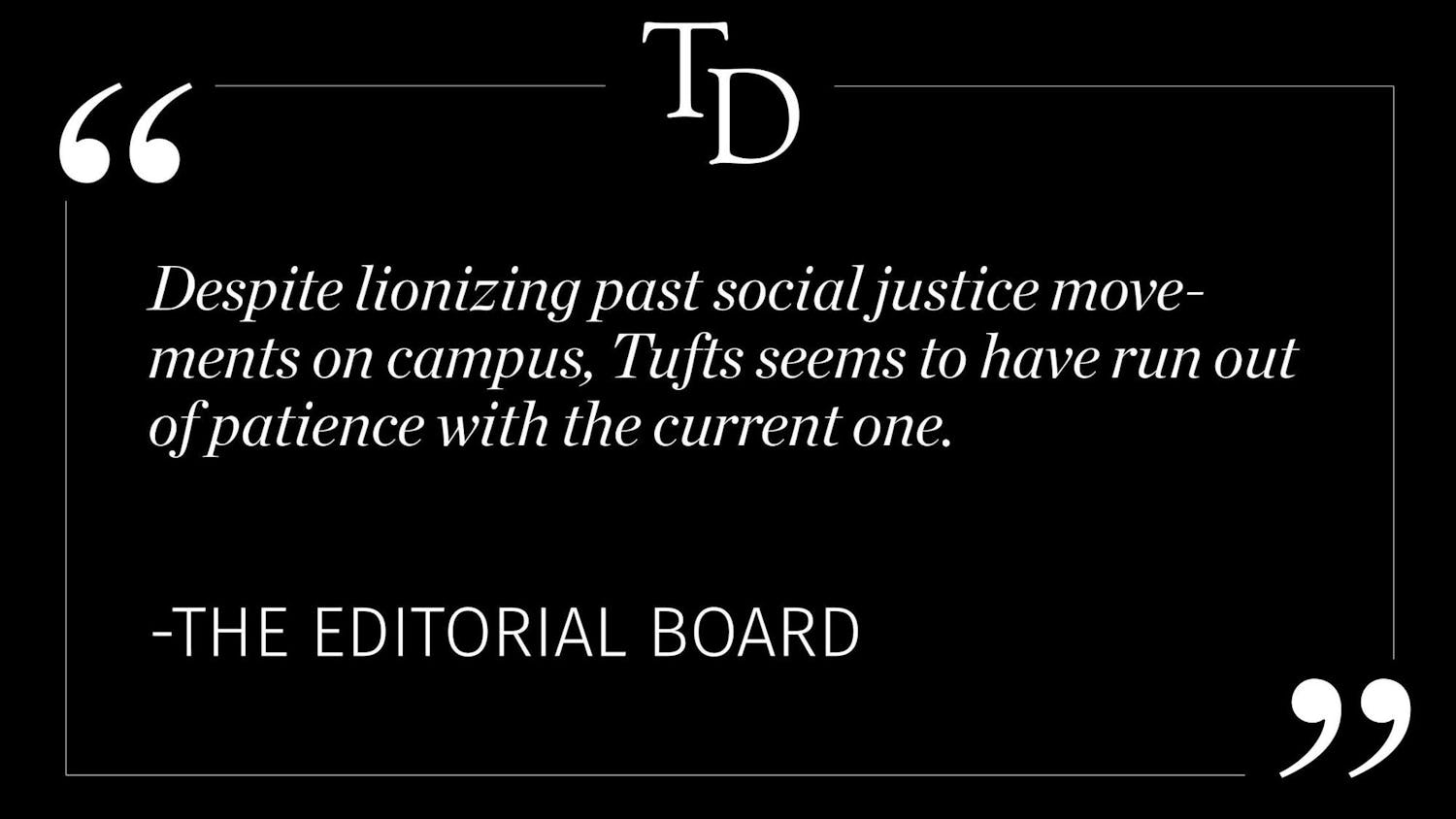Most of us are familiar with the statistic: One in five female undergrads are sexually assaulted on college campuses. The fact that sexual assault is present, let alone rampant, on any college campus is disturbing and unfair. While there is still much that needs to change, it is also important to recognize how far we, as a university, have come.
In November 2011, Tufts hired a Title IX Coordinator after going without one for two years in a row — a major indiscretion. In April 2014, the U.S. Department of Education’s Office for Civil Rights (OCR) announced that Tufts had not been offering adequate support to students filing sexual assault reports, putting the university at risk for losing federal funding. But the OCR and Tufts finally came to an agreement in May 2014, in which the OCR laid out several requirements including enhancing student outreach, offering regular Title IX training and providing timely and effective support for victims.
Obviously, this was not an automatic fix. Results from the Tufts Attitudes About Sexual Conduct Survey (TASCS), which was administered in spring 2015, shows that 30 percent of the undergraduate student body completed the survey, and of that sample pool, approximately 25 percent had experienced either non-consensual intercourse or other non-consensual sexual contact since enrolling at Tufts. Most of the incidents occurred in residential spaces, and most of the time, the victim knew their perpetrator. Additionally, 63 percent of students across the university reported an incident of non-consensual sexual intercourse thought that their experience was not "serious enough to share," and 74 percent did not want to take legal or disciplinary action.
In response to this data, University President Anthony Monaco wrote a letter to the Tufts community, calling for further reform.This reform took place through the Sexual Misconduct Prevention Task Force, which Monaco chairs. Now, prevention is taught before students even set foot on campus. Prior to Orientation, first-years are required to complete an online Haven training, which aims to educate students on preventing sexual assault, creating safe communities and supporting assault survivors; during Orientation Week, first-years attend “Speak About It,” a presentation that uses aspects of performance to discuss consent and healthy relationships; and during the fall semester, first-years are also required to attend an Office of Equal Opportunity (OEO) policy session. There is no denying that Tufts has been moving towards reform. Discourse surrounding sexual assault is put into place immediately for students, initiating further conversation and activism.
Other universities around the country are also seeing positive change. In 2014, federal campus safety data reported that both Brown University and the University of Connecticut had the highest number of reported rapes of any college in the United States. Both schools reported 43 incidents that year. While this statistic may seem disconcerting, it’s indicative of positive reforms: more students are beginning to feel comfortable reporting sexual assault. On a national level, reports of sexual assault on college campuses increased by more than 1,000 between 2004 and 2012. In the Greater Boston area alone, 22 of the largest colleges in the area had an approximately 40 percent increase in reports of “forcible sex offenses” between 2008 and 2012. This is a sign of progress, especially in the face of the fact that nationwide, 88 percent of students who experience sexual assault go without reporting it. The sheer number of occurring assaults remains a great injustice, but with more people feeling comfortable enough to report, there is increasing potential for cultivating safer environments.
These changes can be attributed to activism among students, campus organizations, increased education surrounding sexual assault and better systems of support being put into place. Schools like the University of Michigan have acted as models for combatting on-campus sexual assault, implementing programs such as "bystander education" and consent role-playing. Dartmouth College implemented a bold change in 2015, requiring education on sexual violence all four years of college. The University of California, Santa Cruz now dedicates a whole week in April, "Consent Week," to discussions including rape and sexual violence.
Just this week, Tufts sent out an invitation for students to join a focus group to revise and review the TASCS. This is an admirable demonstration of both the university's continual efforts to improve sexual assault programming and its dedication to hearing student feedback and suggestions. Involving students in the awareness and prevention effort is the best way for administrators and students to open up a positive dialogue and work together to make the Tufts community a safer, more proactive environment.
All college campuses, including Tufts, still have a very long way to go when it comes to eliminating sexual assault. But as reports rise, discourse is widened and training is increased, great strides are being taken towards what should be the norm on college campuses: an environment of living and learning in which safety is never compromised.
More from The Tufts Daily





